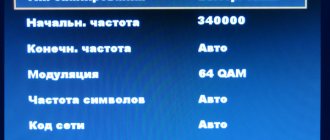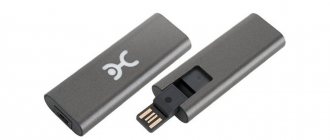Types of satellite Internet
At the moment, there are only two options for providing access to satellite communications on the domestic market. They differ in the specifics of gaining access; each of them requires special equipment. In addition, satellite communication is the only stable way to get a network connection in the remote corners of the planet, regardless of the type of terrain, landscape and distance from civilization. Suitable for a private house, cottage in the village, regardless of their remoteness.
Despite such obvious advantages, satellite Internet and television remain one of the least common methods of transmitting and receiving data. Basically, satellite communications are used only by subscribers who require complete and absolute independence from terrestrial operators.
Note! Satellite communication is the most autonomous and independent way to gain access to the network.
There are only two common methods of data exchange using satellite communications throughout the world:
- Unilateral. In a particular case, data is received using a satellite, and its transmission takes place using conventional terrestrial communications.
- Double-sided. In this case, both reception and transmission of information takes place using a communications satellite.
The domestic market for home or commercial satellite communications is about two million subscribers. According to statistics, not all of them are located in remote corners of the country. A large part of subscribers are located in the suburbs, where summer cottages are traditionally located.
One-way satellite internet
The method that is most widely used. The work uses the following principle: a satellite channel is used to receive the signal, and any signal transmission is carried out using terrestrial communication networks. According to the description, in this case, it is not enough for the subscriber to have only a satellite data transmission channel, since normal communication requires a connection to a terrestrial wired or wireless Internet operator.
Important! This access scheme is suitable where mobile operators or cable networks are widespread.
As for equipment, almost the same set is required for one-way and two-way communication:
- Satellite dish that comes with the transceiver;
- A special modem for this type of communication;
- Bracket for satellite dish;
- Special coaxial cable;
- A special DVB card is required that processes all received data;
- A special converter is required to convert frequencies.
Equipment for one-way access is smaller in size than for similar two-way access. In addition, there is no need for a sufficiently large and massive transceiver, since data transmission via satellite occurs only in one direction.
The differences also lie in the software, which comes in two types. In the first, the DVB card is a network receiving device, and transmission is carried out through a VPN tunnel. In the second case, special software is used to speed up the acquisition of information.
Pros:
- Relatively high operating speed;
- Inexpensive equipment;
- Smaller size and weight of equipment, which makes it easy and cheap to install;
- Lower cost of subscription fee;
Minuses:
- Heavy dependence on the quality of data transmission to send requests;
- High accuracy and qualifications of the master are required when pointing at the satellite;
- Difficult to use if you have a home network and multiple access points.
Two-way satellite internet
The principle of operation of this method is that only a satellite dish and equipment are needed to transmit and receive a signal. The connection is completely autonomous and independent, unlike a similar one-way connection.
Note! Both sending and receiving of any information is carried out by a satellite dish.
This allows you to use satellite television and the Internet on 95% of the territory of Russia, since satellite communications are available almost everywhere. The two-way connection method is less common and more expensive than the similar one-way connection. It is more used in commercial structures, since all costs are paid off by good signal quality.
The equipment needed to receive the connection is similar to the one-way method, only a converter and DVB card are not required:
- Satellite antenna that goes together with the transceiver;
- Modem for two-way communication;
- Bracket for satellite dish;
- Coaxial cable of the required length.
Important! The MTS operator provides the entire set of equipment for rent. You only need to make the connection by the company’s specialists.
In this case, equipment rental fees will be added to the bill for using the services. You can purchase everything you need yourself, in which case you can only pay for communication services.
Note! For each subscriber who wants to connect to a two-way data transfer method, it is necessary to know all the positive and negative aspects.
Pros:
- Absolute autonomy from any other communication channels and service providers;
- No difficulties in connecting and using.
Minuses:
- The high cost of both the equipment itself and the connection with a subscription fee;
- Large equipment sizes;
- Long delays due to long distances from the satellite to the subscriber’s equipment.
Coverage area
MTS receives and transmits the signal using the ABS-2 device, which hovers in space (75° east longitude) and covers more than 95% of the territory of Russia.
How can I find out about connectivity? The map shows in red the gradation of the strength of the incoming satellite signal - the more intense the color, the more stable the reception. In those areas where the color is weaker, it is recommended to use satellite dishes of the largest diameter when connecting.
The brighter the color, the stronger the signal in the designated area
How to check the ability to connect satellite Internet and TV using the online assistant?
- Go to the assistant's website.
- Enter the address of your private home and click the “Start” button.
- Use the arrow keys on your keyboard to keep the satellite signal in the green zone.
- After completion, a notification will appear asking whether it is possible to connect satellite Internet and TV.
Is it worth connecting?
The principle of operation of satellite Internet and equipment for connecting it
It is possible to list only those moments that the subscriber will receive as a result of connecting to television and the Internet. And the final choice must be made by the user himself, taking into account the following factors:
- Virtually unlimited access. Using a satellite signal, it is possible to cover up to 100% of the planet's area. Cable or wireless television and the Internet do not provide the user with such extensive coverage in areas with difficult terrain. A good signal is provided even in the most inaccessible areas. In this case, the cost of the monthly fee will be much lower than in the case when it is necessary to pull the cable over long distances.
- TV picture quality. Analog and simple digital television cannot boast such good picture and sound quality. Satellite television can provide absolutely clear images in High Definition 1080i resolution. In addition, many TV channels use high-quality digital sound;
- Lots of TV channels. The subscriber has the opportunity to receive a list of thousands of channels from all over the world in many languages.
- Various topics of the broadcast network. You can choose channels that work only in one area, for example, movies, music, sports, travel. In addition, you can choose your own broadcast package from your favorite TV channels. The user can connect or disable unused or unnecessary channels at any time.
- Additional functions. You can get such interesting functions as pausing the broadcast, recording your favorite movies or programs in memory, rewinding, interactive information and announcements, video games and much more.
- Satellite Internet (WebTV). It is a “television + Internet” type system. In all respects, network access can be compared with cable analogues, and even surpass in terms of speed.
- Radio stations from all over the world. You can listen to thousands of world radio broadcasts and enjoy high-quality sound.
- Price. Definitely, connection, setup and subscription fees for satellite communications are expensive.
“Satellite Internet” service from MTS
In fact, the MTS provider does not provide such a service, but there is a developed “Satellite TV” service, which you can connect without much effort, just by filling out an application.
Some satellite TV plans include Internet access, but such packages often have a higher-than-average cost, which means the Internet will be very expensive.
Despite this, MTS shares a list of providers that can provide Internet. This is done because MTS equipment can receive signals and transmit them from other satellites.
Communication tariffs
Applications for controlling Wi-Fi networks and monitoring traffic on Androdi
Note! The operator's tariff schedule is very extensive, it all depends on the required package.
There is simply access to satellite television, there is access to the network and everything together. Accordingly, the prices are different. It all depends on the required data transfer speed and the number of television channels. All tariffs, special offers and promotions can be viewed on the operator’s official website.
Often the operator runs promotions and offers special rates. With their help, you can connect for free or at a big discount, and also receive bonuses when you pay a subscription.
Cost of equipment
Technology for transmitting the Internet through the power grid: equipment and characteristics
All necessary equipment can be purchased independently or rented from the operator. In the first case, the monthly subscription fee will consist only of funds for using the services. In the second case, they will be added to the equipment rental fee.
Note! The connection can be carried out in two ways - by specialists or independently.
The cost of the equipment depends on the connection method. Equipment for the one-way method may cost a little more. But the monthly fee will be less.
On average, a set of equipment costs from 25 to 40 thousand rubles, depending on the manufacturer. You can save money and purchase used equipment yourself, then it will cost from 10 to 15 thousand, depending on the condition.
How to connect
Note! The connection can be carried out in two ways - by specialists or independently.
The first method is more priority, since it will ensure that all settings fully comply with the required ones. However, you need to pay to connect. In the second case, you can save money.
Antenna installation
The first step is to choose the most suitable place to install the plate, after which you need to perform the following sequence of actions:
- Using a compass, determine the north direction to which the antenna will be directed;
- Attach the bracket to a flat surface;
- Install the bracket and secure the satellite dish to it;
- Connect the wire to the F-connectors.
Settings
Sequence of steps to configure the antenna:
- First you need to download a special application for your phone called SatFinder.
- In the interface you need to select the ABS2-75E satellite. Its use is very simple, you just need to follow all the instructions. The application will independently calculate and indicate the route to the satellite, and also calculate the required rotation and tilt angles of the dish.
- After this, you need to connect the wire directly to the HD set-top box from the operator.
- A menu will appear in which you need to click on the “Settings” section, then “Antenna Settings”. The system will display the signal strength received by the antenna. If it is weak, then it is necessary to rotate the dish until the maximum quality of data reception is obtained.
Preliminary preparation
Having decided on the choice of provider and deciding to contact MTS, users must think about how to install the equipment. But before that, they will have to decide what kind of equipment they will need. You will have to choose between 3 options:
- a standard linear set-top box, compatible with any TV, but not distinguished by a large range of functions and options;
- an interactive set-top box that supports options and add-ons offered by modern operators;
- cam module compatible with modern smart TV.
When choosing a receiver, you need to focus on your own desires and the TV to which the TV is connected.











